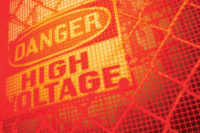What separates good from great?
First, in order to achieve some level of success, companies need to have the commitment of top management, an ongoing process to inspect their workplaces and make corrections, and solid training programs. These are the same things you are likely to be doing today, right? Good organizations also investigate accidents to understand what happened and what they could or should be doing to prevent re-occurrence. They employ causal analysis techniques to uncover all the process and system deficiencies that contributed to the accident and don’t limit their investigations to only the employee involved. Better organizations do all of these things but also include near miss reporting.
This is all good stuff, but what are the “great companies” doing? What all great companies do is embrace learning. It’s what we call “a culture of learning.” They learn from accidents and near misses, but they also learn from all sorts of observations in the workplace, from people not wearing safety glasses to spills on the floor. They also embrace and allow everyone to report what they see — both good and bad — by establishing a culture of early reporting.
More than “coach and correct”
Let’s look at safety glasses for an example. If you or I (or any safety professional) walk into the plant or onto the jobsite and observed someone not wearing PPE, we would likely provide a “coach and correct” to the individual explaining why he needs to wear safety glasses and instructing him to put them on. Think about how many times a day, a week, or a month this is happening. Do you or does anyone else in your organization know how often? Think about how many times you have witnessed someone not wearing PPE. If you had a culture of early reporting, you might understand the magnitude of the issue. If you knew the extent, would you act differently? Could you or your organization do something differently to fix it?
Obviously, not wearing PPE is a basic safety violation and should be a red flag indicating that something is wrong in your systems or processes. The tough, and more important, question here is this: if an employee isn’t going to follow basic safety rules, how can you expect him to follow more complex rules? If your employee isn’t wearing her PPE, will she wear her fall protection at heights? Would the employee who ignored simple safety rules operate a forklift he is not trained to drive in order to accommodate a supervisor’s request to get products loaded on the truck at the end of quarter? Ask yourself these questions and then face reality: these system and process failures are not solely on the employee’s shoulders. In the case of PPE and safety glasses in particular, the issue can range from size and fit, to style, discomfort, inconvenience, lack of training, lax enforcement, unclear requirements, and the always-popular “my boss doesn’t wear them so why should I?” reasoning. The list of excuses continues. The issue of correcting the entire system is more complicated than the individual “coach and correct” scenario.
Fixing the system
Great companies take the time to learn from identified errors in systems and/or processes and to fix the issues creating the problems in the first place. This proactive approach is what separates the great companies from the good ones. Great companies have learned over time that fixing system and process issues have broader positive implications for the organization: morale improves, production increases, and employees feel that management truly cares about their safety. Fixing these issues may also avoid bigger potential problems that have not yet been uncovered (like the fall protection or forklift issue mentioned earlier). Great companies have also learned that the more information they have, the better the organization will be at driving continuous improvement. That’s why they embrace early reporting and discourage the “whack the mole” mentality. Ultimately, this helps prevent the fear of reprisal for reporting. In fact, great companies go out of their way to encourage reporting and recognize employees who are good at it through incentives and other means to drive success.
Why is this important? Why do we take the time to explain this process to you? “C’mon, we are already a good company, and it is hard work to do all the things you said to get to great.” The reality is that organizations are good, and accident and fatality rates are at their lowest in recorded history. At the same time, that trend is deteriorating — and quickly, in fact.
First, if you wait for accidents to occur before you learn from them, then you are simply treading water until you drown. There are fewer accidents happening in workplaces, so the indicators are becoming more subtle. You must educate yourself and your employees before someone gets hurt. We see this waiting scenario played out daily in organizations that have accidents, and most frequently in those scenarios involving the recent catastrophic headlines. Second, the workforce is changing. It is older and less healthy. As a result, the cost to help an injured employee recover and get back to work is increasing at an alarming rate. Today, the cost of an injury is 16 percent more than the same injury a year ago. Any injury has an increasingly negative pull on the bottom line. The adoption of the new way of thinking — one looks ahead rather than behind — is critical for any organization to compete in the new millennium and continue the journey from a good culture of safety to a great culture of safety.
Article reprinted with permission from UL Workplace Health & Safety.



